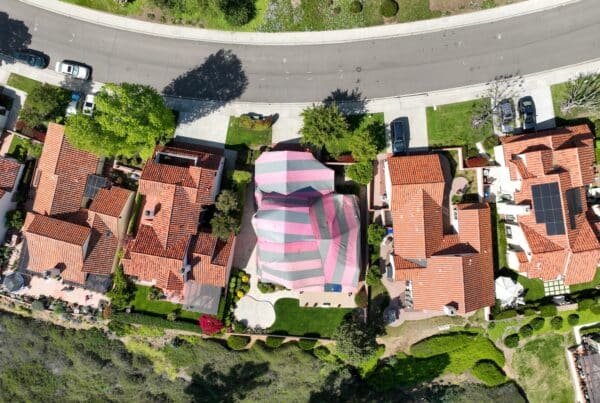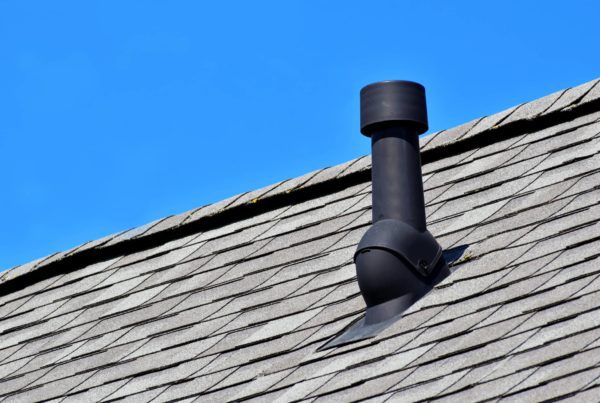
Imagine that you are cleaning around your house and deciding to check all areas of your home. You come to the area where the furnace is installed and notice water pooling around it. Well, depending on the type of furnace that is installed will determine what the reasons for this might be. Why is my furnace leaking water? It is usually related to a clog in a line or part of the furnace that keeps condensation away.
Not all furnaces created condensation, so let’s take a look below at the two types of furnaces and what they do. It is possible that the condensation leak is from your air conditioner.
What Types Of Furnaces Are There
Believe it or not, there are two types of furnaces. Let’s take a look below at the two types of furnaces and how they are different.
- High-efficiency furnace (condensing) – this type of furnace has an annual fuel utilization efficiency (AFUE) of 90 percent or higher. This means it has a cooling exhaust and will produce condensation. Also, it has a vent or exhaust pipe that is PVC plastic.
- Standard-efficiency furnace (conventional) – this type of furnace has an annual fuel utilization below 90 percent. This means it does not create condensation. Also, it has a vent or exhaust pipe that is metal.

How Do I Know Which One I Have
Depending on the type of exhaust pipe will determine which type of furnace you have. If the exhaust pipe is metal, then you have a conventional standard efficiency-rated furnace. They do not create condensation. However, if the exhaust pipe is white PVC plastic pipe, then it is a high-efficiency condensing furnace. This type will produce condensation.
Where Would The Leak Come From
When it comes to a furnace, the leaking of water can only occur if you have a high-efficiency condensing furnace. The other furnace type, a standard-efficiency non-condensing furnace, typically does not leak water. Let’s take a look below at why a furnace might leak.
High-Efficiency Condensing Furnace
- Condensate drain hose – if this hose becomes clogged, the water will back up into the exhaust PVC pipe. This will create a blockage and water will start leaking from the condensate drain hose.
- Inducer assembly – if an inducer assembly is cracked, water will leak out of the furnace. Condensation will run into the exhaust/flue pipe and to the condensate drain hose. Then it will travel to the inducer assembly. A crack will allow the water to leak out once it enters the inducer assembly.
- Condensate drain line – loose connections or cracks in the drain line allows water to leak out. Also, the condensate drain line could get clogged as easily as the condensate drain hose. This would cause a backup of water to leak from the furnace.
- Condensate trap – if your furnace has a condensate trap, it could also get clogged by dirt and debris from the furnace. This would cause water to back up and leak out of the furnace.
- Condensate pump – a malfunctioning condensate pump will cause water to leak out of the furnace. Most condensate pumps will last between 3-5 years and if damaged will need to be replaced by a professional.
Standard-Efficiency Conventional Furnace
- Damaged drain pan – if water is leaking around your conventional furnace it could be a damaged drain pan that isn’t containing the water properly.
- Frozen coil – in some cases, your evaporator coils will freeze and the ac unit will begin to leak. This makes it look like the furnace is leaking.
- Clogged drain line – just like the condensing furnace, if the drain line is clogged or damaged in a conventional furnace, it would leak water.
- Failed Condensate pump – similar to a high-efficiency condensing furnace, if the condensate pump fails or gets clogged, it will leak water.
Other Recommended Maintenance
Now that you understand why your furnace is leaking water, it might be a good idea to gain a better understanding of your furnace. For example, where is the filter on your furnace? This is an item that could cause your furnace to now work as efficiently as it should. Read up on where the filter is and when to replace it. You want to avoid a black filter.
Next, if you are experiencing an issue with your furnace not turning on, it is a good idea to call on your local HVAC professional. However, before they arrive, you might want to get an idea as to why the furnace isn’t turning on. Consequently, this is a great idea so that you don’t get shocked by an unexpected repair list.
Lastly, your furnace might not be the only thing leaking water in your home. If there is a damaged condensate line or a clog, your air handler could also be leaking water. In some cases, the appearance that your furnace is leaking water could really be from the air handler. Be sure to have the unit checked out.

When Do I Call A Professional
If your furnace is leaking water, you will want to call a professional master plumber for your furnace replacement. They would know the ins and outs of how to keep your furnace from leaking water. Additionally, they can tell which type of furnace you have in your home. Knowing which type you have allows them to troubleshoot the best solution for repairs. If you aren’t sure who to call, reach out to your local home inspection team. Not only will they inspect your furnace and the conditions around it, they can also refer a reputable HVAC technician for furnace repair.
Conclusion
Maintenance of a furnace is the key to keeping it running properly. Changing the filter every 90 days is a great start. This ensures that the furnace doesn’t get overworked and clogged up with pet hairs, dust, and other debris in the home. Reach out to your local home inspection team to determine what your furnace needs are. Call on All Coast Home Inspections for a furnace and home inspection in Houston, TX.



